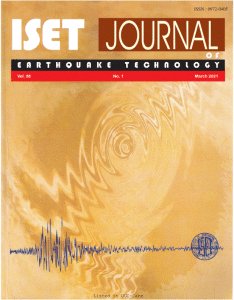Home > Issues & Journals
ANALYSIS OF SOME AFTERSHOCKS OF THE RUDBAR EARTHQUAKE OF 1990 USING MASTER EVENT TECHNIQUE
H. Harnzehloo, I. Sarkar and R. Chander
Paper No.: 362
|
Vol.: 34
|
No.: 1
|
March, 1997
|
pp. 1-15

Abstract
The seismograms recorded by a network of five seismograph stations operated by Institute of Geophysics, Teheran University, following the main Rudbar earthquake of June 20, 1990 were examined for a three. week period from July 5, 1990, to July 22, 1990. The arrival times of P-waves for 36 aftershocks were read with the utmost care. The first arriving P-wave was a direct wave from the hypocentre to each of the recording stations for 23 of these aftershocks. The first P-wave was a head wave at some of the recording ststions for remaining 13 aftershocks . The: data was used to locate the hypocentres of all 36 aftershocks with a computer program based on the master event technique. The 36 epicentres define a narrow belt oriented along an azimuth of N125· . The epicentre of the main Rudbar earthquake, as estimated by Institute of Geophysics, Teheran University, Iiel; at the southern edge of this belt. The estimated focal depths were between 1.0 km and 16.0 km. The depth section perpendicular to the strike of the epicentral belt shows the hypocentres in a narrow subvertical zone. The depth section along the strike of epicentral belt shows the hypocentres aligned in a narrow zone dipping approximately 45· to the ESE.
Keywords: Not Available
©2025. ISET. All Rights Reserved.